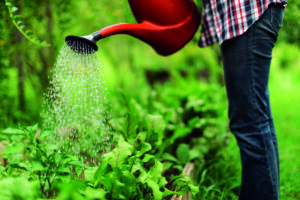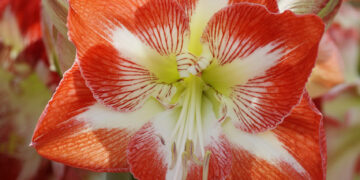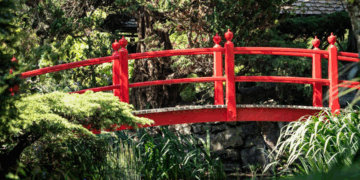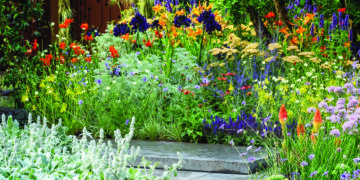Kitty Scully has some plant watering strategies that may help conserve water, protect plants and adapt to ever erratic
climatic conditions.
Where plant watering strategies matters most
In times of drought, it is tempting to water everything but remember not all plants need the extra help. Established plants, especially perennials, shrubs, and trees, usually have deep root systems that allow them to draw moisture from well below the surface.
Instead, focus your watering efforts on those that truly need it: recently planted trees, bushes and perennials, tender seedlings, young vegetables and anything growing in containers.
Water early, water well
A common question is, when is the best time to water? The simple answer is whenever you can! However, the prime time to water plants is early in the morning, as this allows the water to soak into the soil before the heat of the day causes evaporation. If morning isn’t possible, watering in the evening is a good alternative, just make sure the leaves have time to dry before nightfall. This helps prevent fungal diseases and reduces the damp conditions that attract nocturnal pests like slugs.
Try to avoid watering during the hottest part of the day, as much of the water will quickly evaporate and be wasted. Deep watering encourages roots to grow downward which increases a plants drought-resilience.

Dry spells
If conditions are very dry, it is wise to delay planting out new additions (unless urgent), until cooler, wetter weather arrives. Young plants and seedlings need regular watering to establish and warm,
dry soil makes it harder for them to establish and thrive. Instead, keep the pots in a cool, shaded area as even sun-loving plants can tolerate a few hours of shade during a heatwave, which helps reduce their water needs. Mulching is one of the most effective ways to conserve water in your soil. It reduces evaporation, insulates the ground and improves the soil’s structure and moisture holding capacity. Always water before you mulch and apply a 3–5 cm layer of organic material such as compost,
grass clippings, or seaweed between rows and around your plants.
Reuse and harvest water
Water conservation begins with capturing and reusing what you have. Install a water butt for increased storage, to collect rainwater from available roofs and gutters if you haven’t done so already. In
a prolonged dry spell, even grey water (such as from washing up) can be used but make sure to use biodegradable soap and avoid using it on edibles unless absolutely necessary.
Wildlife may also suffer in dry conditions so place shallow dishes of water in your garden, one on the ground for hedgehogs and one higher up for birds. Change the water daily to prevent disease. It’s hard to be certain, but if dry springs are going to become the norm, our approach to gardening must evolve and adapt.
By watering wisely, using mulch, and choosing resilient perennials, the challenge will become an opportunity.
For lots more tips for your garden, don’t miss the latest issue of The Irish Garden magazine on sale, or subscribe now.











